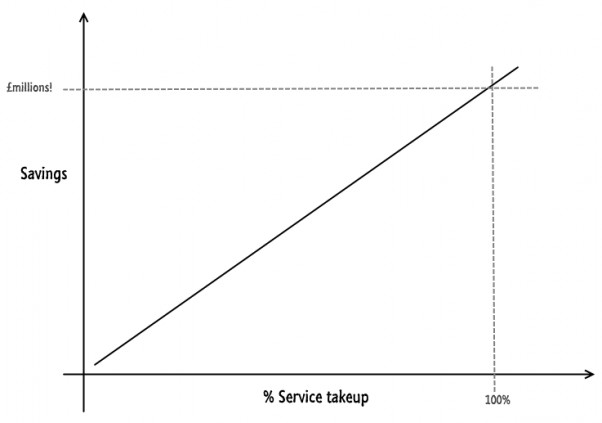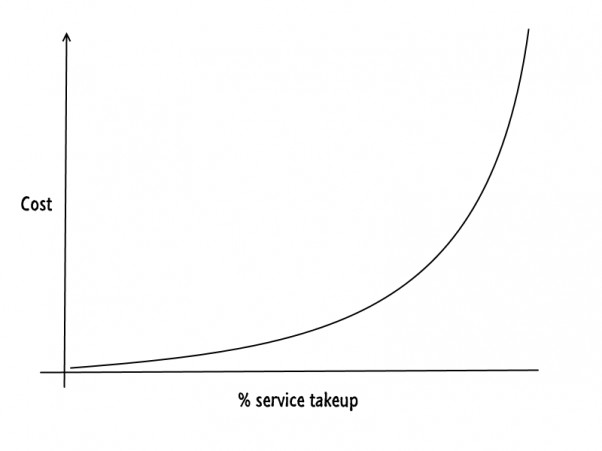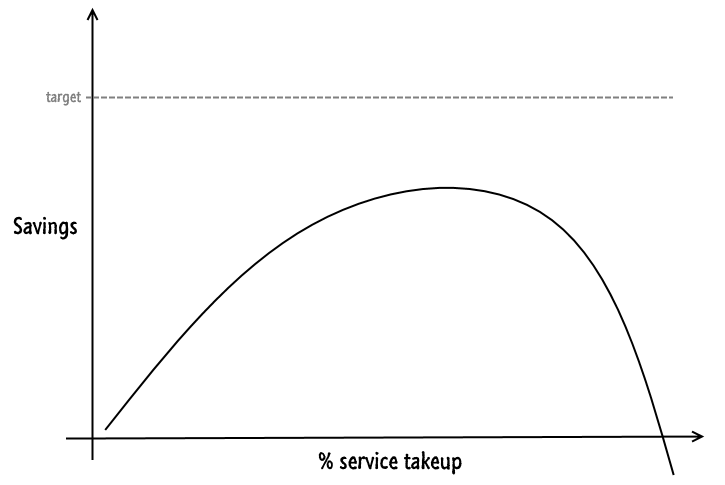It’s all too common, when people are looking for savings from digital services, for them indulge in a deeply flawed arithmetic exercise, and thereby conclude that a certain level of take up will equal a certain amount of savings. They look at the savings from moving one phone call or face-to-face meeting online, and then extrapolate all they way to 100% online delivery and the massive savings number you can achieve.
The problem is, in the real world, things very rarely follow straight lines. Yes, many people are capable and want to interact with your services digitally, but as you move beyond the easy-to-reach, digitally literate people, it starts to cost more and more to get people on board. The cost versus takeup graph actually looks more like this.
As people’s digital skill levels reduce you will have to offer more and more support for people to use the service, or to use computers at all, or to read and understand what is on the screen, and then there are still ~11% of people who don’t use the internet in the UK at all. For you to totally replace your call centre, you will need to provide these people with internet access.
Peak Savings
Going to 100% is actually not going to save the money you might project at first. It might not save you money at all - as the cost of getting hard-to-reach people online and capable of using your service increases, it will likely reach a point where it outstrips the savings of the phone calls it replaces. Think about that - for some customers, it’s cheaper to let them ring you. Forcing these users online will only make your total service delivery bill go up.
As you push for the 100%, you never reach the mythical target you might have been given from a linear projection at the beginning. If anything, you start moving away from it. If this is how your services are measured, you can only ever fail.
Of course, there are huge advantages and savings to be had, when you push to provide services digitally. But be wary of 100% savings targets, or projections that just see your savings increase as more and more people use the service, because that’s just not the way it works.
If not 100% then what?
Well, at risk of over-simplifying something fairly complicated, the answer might well be 82%. Based on the their own Digital Landscape Research paper, The Government Digital Service currently use 82% digital take up to calculate savings, but as they note this can be lower for more complex services.


